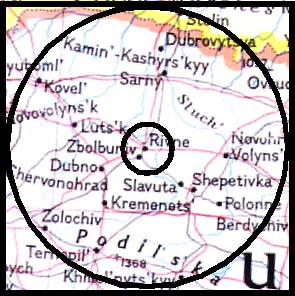



Rovno
City, Country
Kuynetsovsk,
Rivne, Ukraine
Number & type of Reactors
2 VVER 440, 1 VVER-1000
(1 unfinished VVER 1000)
Net Electric Power as % in 92 of national total
1818 MWe
6.41% of nat. total
Major population Centers in a 150 km radius and
total estimated population of 150 km r. region
Approximately 2 million, including Lutsk and Pinsk, and parts of Belorus and Poland
Date of commercial operation start up
or (if unfinished) date of construction start.
Startup dates: 1980, 1981, 1986
Operator/Builder
UKRATOMENERGOPROM - operator/builder
Accidents and Dangers:
1984: Leakage of construction liquids created cavities in the chalk rock below the reactor. Construction of all blocks was halted while concrete was poured beneath their foundations.
In 1984, there were also a number of radioactivity releases. In 1990, a rotor malfunctioned, causing the shutdown of reactor 3.
Local Contact Group:
Environmental Brotherhood of Rivne (Rovno)
P.O. Box161
266028, Rivne, Ukraine;
phone:380-362-233-570;
fax: 380-362-266-614
Key Arguments/History
At the end of the 1980s, the USSR Ministry of Energy considered the possibility of closing down the Rovno plants because there was a danger that subsidence of the chalk rock on which they were built would damage the foundations of the plants. The problem was partially solved by the filling of cavities under the reactors with concrete, but this continues to make trouble.
Alternatives:
Efficient use of energy appears to possess the largest potential in resolving the Ukranian energy crisis; in the Ukraine, energy use per unit of Gross National Product is 8-10 times higher than in the Western Europe. The capturing of this energy saving potential is crucial not only for the environment but for the country’s economy. Additionally, small scale hydro electric power station, if fully exploited, could produce more electricity than all the present power stations. Wind power in Ukraine could rapidly displace the present output of the Chernobyl-like stations by ten times. Other possible alternatives include: solar water heating, use of biomass for generating biogas, generation of electricity by solar converters, use of heat - pumps.










